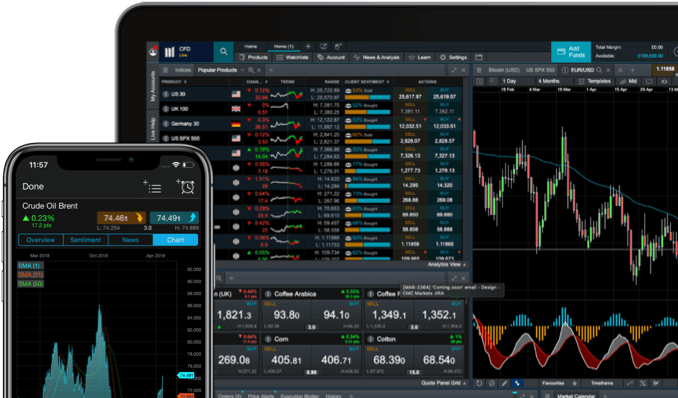
CFD (Contract for Difference) trading is one of the most popular forms of trading in the financial world, but it can also seem intimidating for new traders. If you’re unfamiliar or have only heard about CFD trading in passing, you’ve come to the right place. In this comprehensive guide, we’ll provide a detailed explanation of what cfd trading entails, the benefits and risks involved, and some tips and tricks to help you get started.
So, what exactly is CFD trading? In simple terms, it’s a contract between a buyer and a seller, where the buyer agrees to pay the seller the difference between the current value of an asset and its value at the time the contract was made. CFDs allow traders to speculate on the rise and fall of prices of various assets, such as currencies, stocks, commodities, and indices, without actually owning the underlying asset.
One of the key advantages of CFD trading is leverage, which allows traders to control much larger positions with a small amount of capital. This is because CFD brokers offer margin trading, which involves borrowing money to invest in the position. However, it’s essential to know that leverage cuts both ways – while it can amplify gains, it can also lead to significant losses, especially if not managed properly.
Another crucial aspect of CFD trading is the spread, which is the difference between the bid (sell) and ask (buy) price. Since CFD brokers don’t charge commissions, they make money from the spread, which is essentially their fee. As a trader, it’s important to take into account the size of the spread when deciding which asset to trade, as a larger spread can eat into potential profits.
One of the most significant advantages of CFD trading is the ability to trade in both rising and falling markets. Unlike traditional trading, where you can only make a profit by buying low and selling high, CFDs allow you to take advantage of price movements in either direction, including short-selling. However, it’s crucial to remember that there’s no guaranteed return, and that market conditions can change quickly – so it’s essential to have a risk management plan in place and be prepared for fluctuations in prices.
Finally, it’s important to consider the regulatory environment when choosing a CFD broker. In most cases, CFD trading is regulated by financial authorities such as the FCA (Financial Conduct Authority) or ASIC (Australian Securities and Investments Commission), which ensures that brokers adhere to strict standards and guidelines. This can include measures such as negative balance protection, which prevents traders from losing more than their initial investment, and client fund segregation, which keeps customer deposits separate from the broker’s own funds.
Conclusion:
In conclusion, CFD trading can be a powerful tool for traders looking to profit from the rise and fall of prices of different assets. While there are risks involved, including the potential for significant losses, understanding how CFDs work and developing a solid risk management plan can help mitigate these risks. By using leverage, taking into account the spread, being adaptable with both bullish and bearish trends, and being aware of the regulatory environment, traders can make informed decisions that could lead to successful trading outcomes. Whether you’re a seasoned trader or a beginner looking to get into the game, CFD trading is definitely worth exploring.

